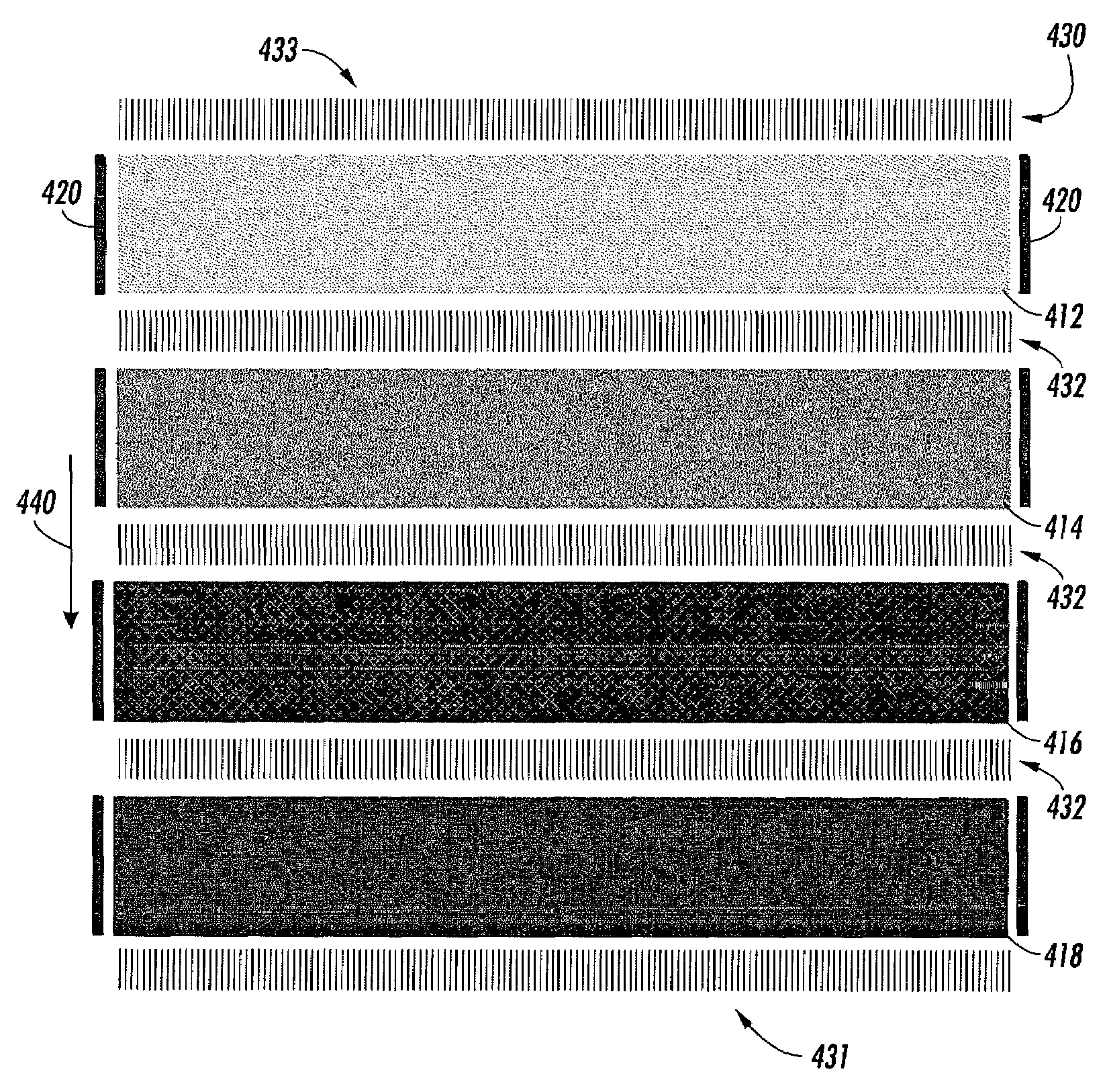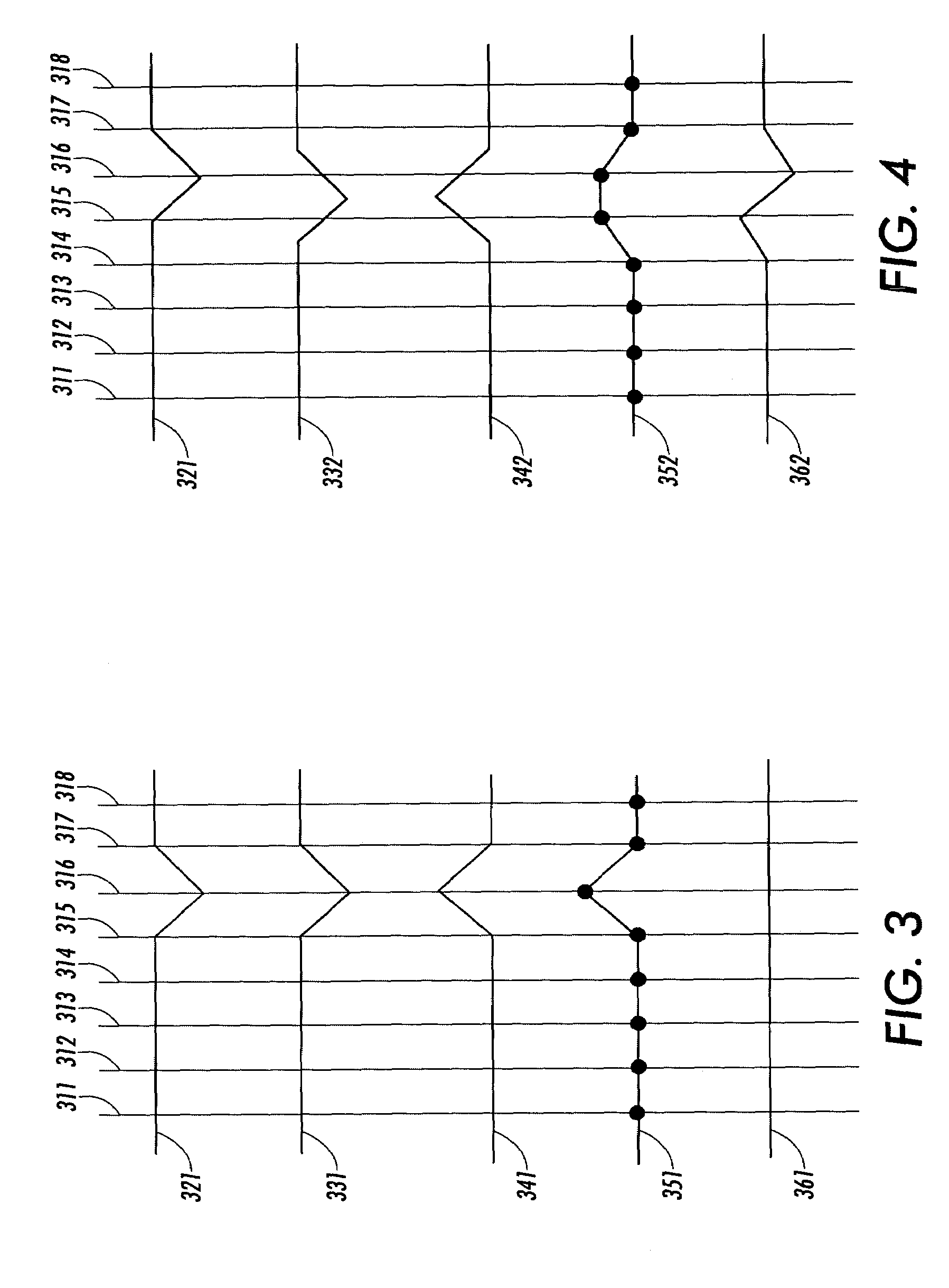Systems and methods for compensating for streaks in images
a technology of system and method, applied in image enhancement, digitally marking record carriers, instruments, etc., can solve the problems of difficult to adequately calibrate streak defects in a single compensation process, and achieve the effect of reducing noise effects encountered
- Summary
- Abstract
- Description
- Claims
- Application Information
AI Technical Summary
Benefits of technology
Problems solved by technology
Method used
Image
Examples
Embodiment Construction
[0035]The compensation technique described herein can be applied to both color and monochrome image forming devices. For monochrome image forming devices, the technique is as described below. Color monochrome image forming devices operate by overlaying different color separation layers. Each color separation layer is individually compensated for using the techniques described herein. As used herein, the term “gray” indicates the amount of coverage of material between zero and 100% density on the printed surface, although in general this material may be colored.
[0036]An input gray level is typically an integer between 0 and 255 that is sent to the marking engine from a computer, an input scanner or other image data source. An actual gray level is the response of a sensor measuring the gray level of the printed image. The actual gray level can be a function of distance in the cross-process direction. The desired gray level is defined as the response of the sensor to what the marking e...
PUM
 Login to View More
Login to View More Abstract
Description
Claims
Application Information
 Login to View More
Login to View More - R&D
- Intellectual Property
- Life Sciences
- Materials
- Tech Scout
- Unparalleled Data Quality
- Higher Quality Content
- 60% Fewer Hallucinations
Browse by: Latest US Patents, China's latest patents, Technical Efficacy Thesaurus, Application Domain, Technology Topic, Popular Technical Reports.
© 2025 PatSnap. All rights reserved.Legal|Privacy policy|Modern Slavery Act Transparency Statement|Sitemap|About US| Contact US: help@patsnap.com



